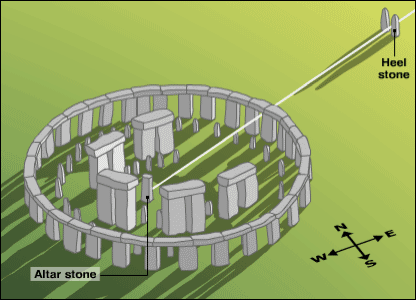Ian O'Neill wrote:Today is a very special day, it's the longest day of the year or the "summer solstice." Often the day just drifts by without even being noticed, but for me, when growing up in southwest England, I always associated solstice with
Stonehenge and
Druids.
Since studying astronomy at school, I soon realized that the summer solstice -- which occurs on June 20 or 21 each year -- was more than just a date to worship the sun; it's a subtle astronomical phenomenon that underpins all life on Earth.
The science is fairly straightforward: The Earth's axis is tilted by about 23.5 degrees from its orbital plane. In other words, our planet spins around its axis like a spinning top, but its north pole is always "off vertical" by 23.5 degrees.
As the Earth orbits the sun, the North Pole is pointing preferentially toward the sun during the summer in the northern hemisphere (now), but points away 6 months later on December 20 or 21. For the northern hemisphere, when the north pole is tilted toward the sun, it's the summer solstice; when pointing away, it's the winter solstice. For the southern hemisphere, the opposite is true (i.e. when it's the summer solstice in the northern hemisphere, it is the winter solstice in the southern hemisphere).
The summer solstice is the longest day of the year, while the winter solstice is the shortest day of the year.
Also, the summer solstice is the day that the sun can be seen at the highest point in the sky. At the summer solstice, the sun will be directly above the Tropic of Cancer (northern hemisphere) or the Tropic of Capricorn (southern hemisphere). If you are located between the Tropics, the sun will pass overhead (i.e. the zenith) in the run-up to summer solstice. At these latitudes, the sun will be directly overhead at different times of the year depending where you are.
 Sunrise Solstice at Stonehenge
Sunrise Solstice at Stonehenge

